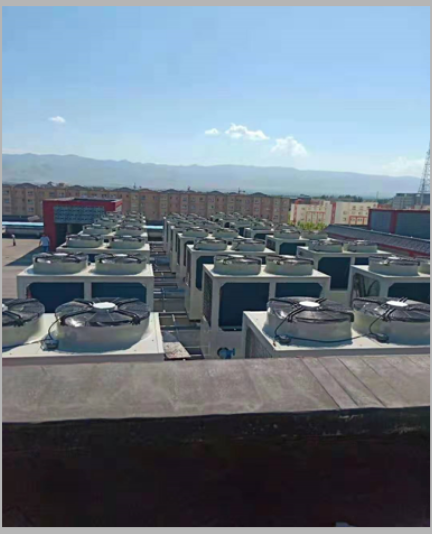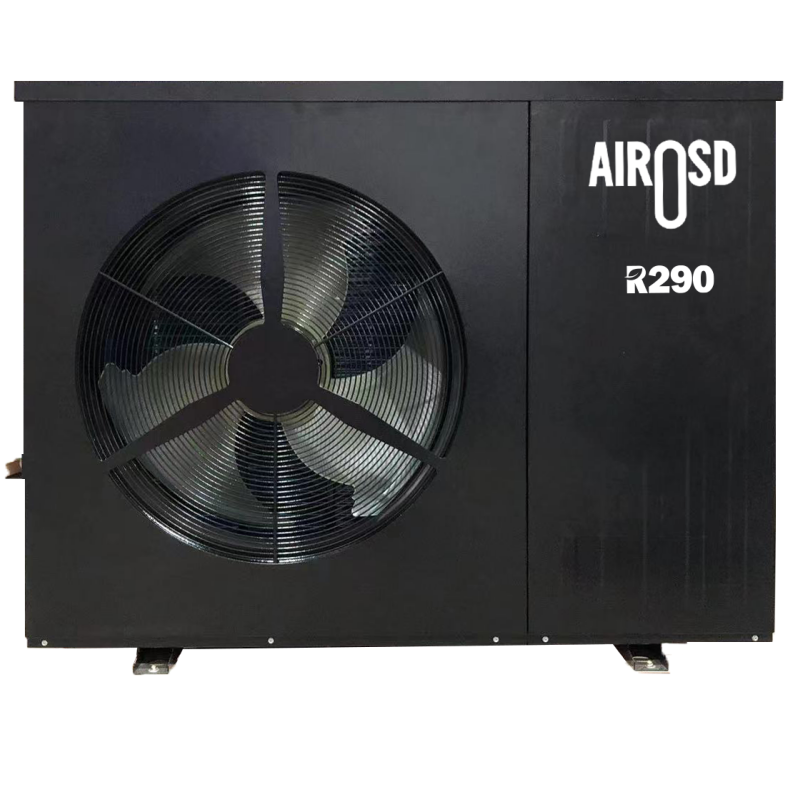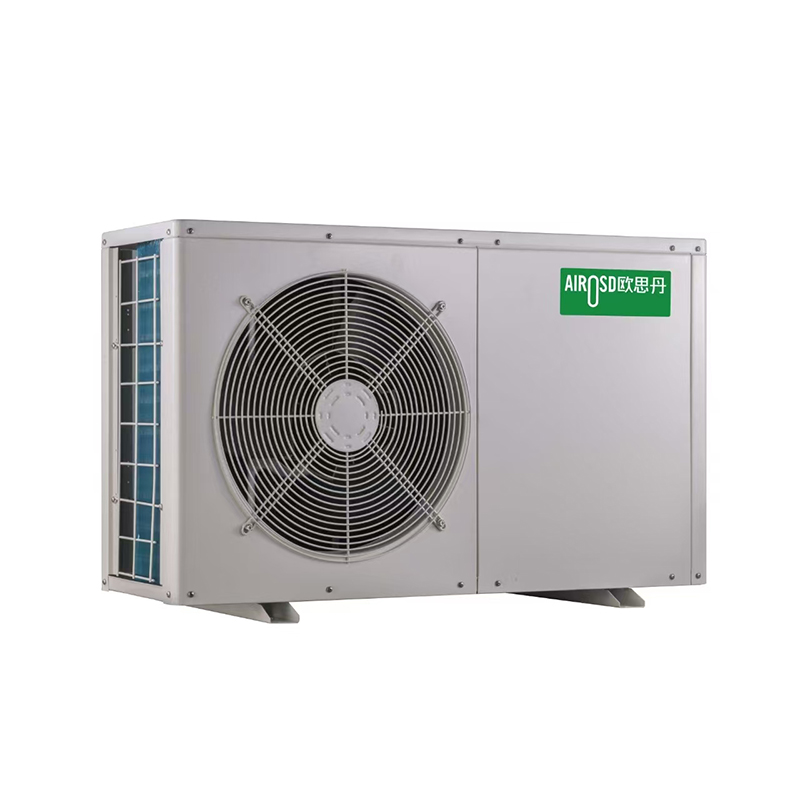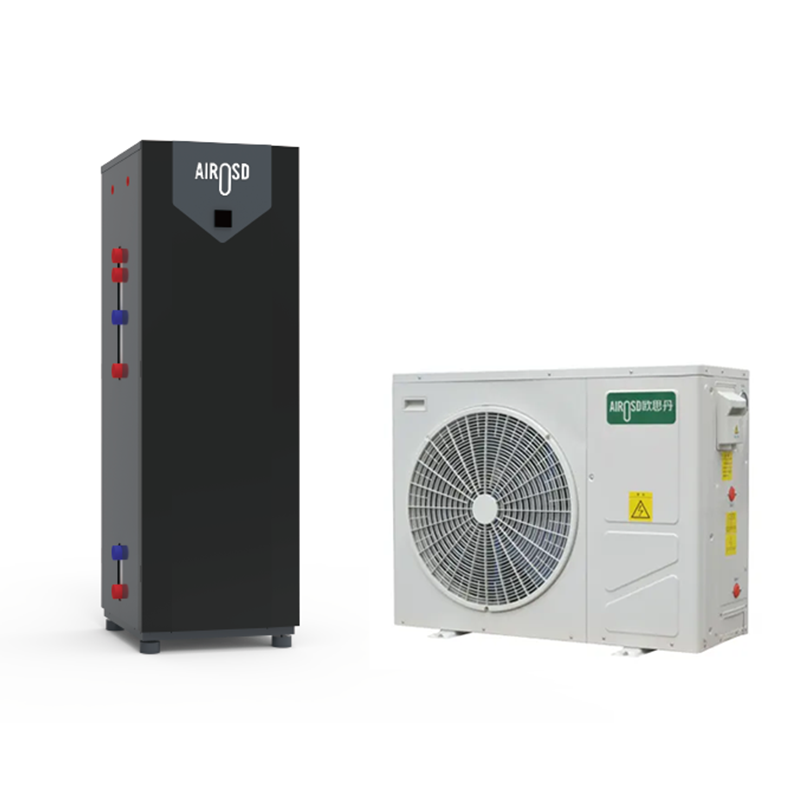After dismantling the previous coal boilers, they all used Airosd air source heating heat pump 60P ultra-low temperature machines. A total of 18 air pumps heating units were used. The operation results were energy-saving, stable, comfortable and cost-reduced, and were praised by government leaders.

Industrial heat pump: The Driving Engine for Efficient Heating and Cooling in Buildings and Industry
Amid today’s energy transition and the push for sustainable development, Industrial heat pump—thanks to its excellent efficiency and environmental friendliness—is rapidly becoming the core heating and cooling solution for commercial buildings, homes, and industrial applications. Heat pump cooling system fundamental principle is to move heat from the environment rather than generate it by combustion, which means that heat pump cooling systems inherently possess strong heating capability. This flexibility—ranging from air-source heat pumps for homes to industrial heat pumps that support large factories—demonstrates an unrivaled breadth of application.
An Energy-Saving Tool for Commercial Buildings: Integrated Industrial heat pump Solutions
For large commercial spaces such as shopping centers, office towers, and hotels, the traditional combination of standalone boilers and chillers often entails high installation costs and heavy energy consumption. Modern commercial heating heat pumps have transformed that paradigm. Designed to meet the large thermal loads of commercial buildings, an advanced commercial heating heat pump can efficiently provide winter air pumps heating while also integrating powerful heat pump cooling system functionality to address summer cooling needs. This “one unit, two uses” capability significantly simplifies MEP systems, reduces upfront investment, and—critically—delivers much higher operational efficiency than conventional equipment. By converting electricity into multiple times its amount in useful heat or cooling, heat pump cooling system generate substantial long-term operating cost savings for building owners. Smart control systems further optimize energy use by adjusting output based on occupancy, weather, and other conditions. Choosing a reliable commercial heating heat pump is becoming a key step toward green building certification and achieving carbon-neutral goals.
The Heart of Home Comfort: The air source heating heat pump Revolution
In residential and small commercial settings, air-source heat pumps are the mainstream choice. Air source heating heat pump extract free heat from outdoor air and—even in very cold winters (modern advanced models can operate stably at −25°C or lower)—can efficiently heat interior spaces. The elegant aspect of this technology is that by reversing refrigerant flow through a valve, the same air source heating heat pump unit instantly becomes a high-performance cooling system in summer. This integrated heating-and-cooling functionality truly delivers a “warm in winter, cool in summer” solution. The core advantages of air source heating heat pump are relatively simple installation (no buried ground loops required), broad applicability, and operating costs far lower than gas boilers or electric resistance heating. Inverter (variable-frequency) technology provides smoother operation, lower noise, and more precise temperature control, greatly enhancing home comfort. Investing in air pumps heating not only lowers household energy bills but also reduces carbon emissions—an effective step toward greener living.
Deep Energy Savings for Industrial heat pump: Waste-Heat Recovery and High-Temperature Applications
At industrial scale—where high-temperature heat (up to 90°C or above), large thermal loads, or process-specific heating are required—Industrial heat pump deliver unique value. Unlike conventional heat pumps, Industrial heat pump can exploit a variety of low-grade waste-air pumps heating—factory cooling water, process wastewater, data-center exhaust, even low-temperature flue gas or condensate—to upgrade otherwise wasted energy into higher-grade heat. That recovered heat can serve process heating (e.g., pasteurization and drying in food processing, reactor heating in chemical plants), large-space heating, or boiler feed-water preheating. Deploying a large industrial heat pump system is a core strategy for heavy industry to achieve deep decarbonization, significantly reduce fossil-fuel dependence, and cut operating costs. Although initial investment is higher, industrial heat pump projects often offer attractive returns and substantial environmental benefits in a context of rising energy prices and tightening carbon constraints—making them a pivotal technology for green manufacturing.
Cooling: The Heat Pump’s Inherent Strength
It must be emphasized that any heat pump is, by nature, a highly efficient cooling system. In cooling mode, Air source heating heat pump operates like a conventional air conditioner—absorbing heat from indoors and rejecting it outdoors. This means a commercial heating heat pump used primarily for winter heating naturally functions as an efficient central air-conditioning system in summer. Likewise, an industrial heat pump deployed for waste-heat recovery may simultaneously provide cooling for equipment or spaces. The Seasonal Energy Efficiency Ratio (SEER) of heat pump cooling systems typically far exceeds that of fixed-speed air conditioners; especially under part-load conditions, variable-frequency technology delivers lower cooling costs and a more stable, comfortable indoor environment. Whether for a household air-source heat pump or a factory-scale industrial unit, the cooling function directly reflects the Air source heating heat pump efficiency and multifunctional design.
Optimized Deployment and a Broad Outlook
To fully realize the potential of commercial heating heat pumps, air-source heat pumps, and industrial heat pumps, professional design, precise installation, and standardized maintenance are indispensable. Correct equipment selection based on detailed building heat-load calculations (including wall insulation, windows, internal gains from people and equipment, etc.) is the foundation of success. Regular maintenance—cleaning finned heat exchangers to ensure good airflow, checking refrigerant charge, tightening electrical connections, and updating and optimizing control software—is essential to keep systems operating efficiently and reliably in both heating and cooling modes. Smart control systems are becoming widespread; when linked to building-management systems, weather forecasts, or grid demand-response signals, they enable dynamic optimization and further energy savings.
Looking ahead, Air source heating heat pump technology is clearly a central pathway for global buildings and industry to achieve low-carbon or even zero-carbon energy transitions. With wider adoption of low-GWP refrigerants, continued improvements in compressor efficiency, and advances in system integration, the application boundaries will keep expanding: air-source heat pumps will conquer colder climates; commercial heating heat pumps will become standard in new commercial construction; and industrial heat pumps will play larger roles in high-temperature processes and complex waste-heat recovery scenarios. From air source heating heat pump that provide residential air pumps heating to massive Commercial Heating Heat Pump that drive whole mixed-use complexes, and Commercial Heating Heat Pump that empower green manufacturing—together with their inherent high-efficiency cooling capability—Commercial Heating Heat Pump are establishing the energy foundation for a sustainable future.




